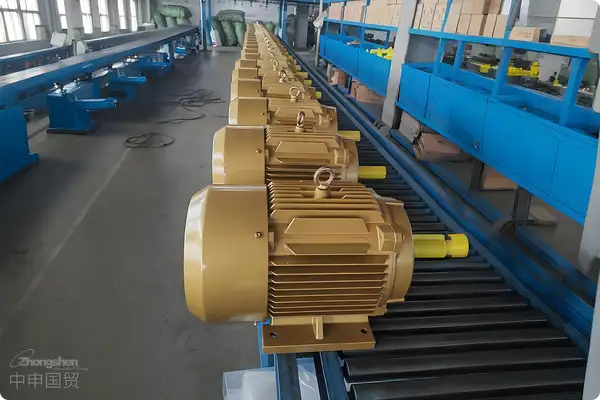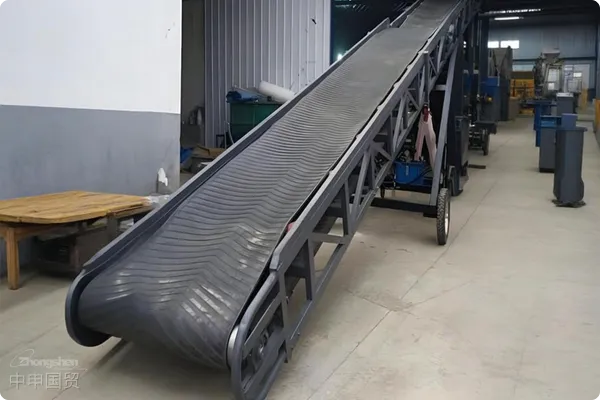- Shanghai Zhongshen International Trade Co., Ltd. - Two decades of trade agency expertise.
- Service Hotline: 139 1787 2118
Have you ever been confused about exporting construction machinery to Germany? Many people are concerned aboutThe customs clearance time for construction machinery by German customsHowever, this timeframe actually depends on various factors and cannot be fixed. That said, if all documents and procedures are complete without encountering special circumstances, customs clearance typically takes approximately3 to 7 working days. Today, we will detail the key factors and countermeasures for exporting construction machinery to Germany, helping us thoroughly explain the main elements affecting customs clearance time and how to address these challenges.
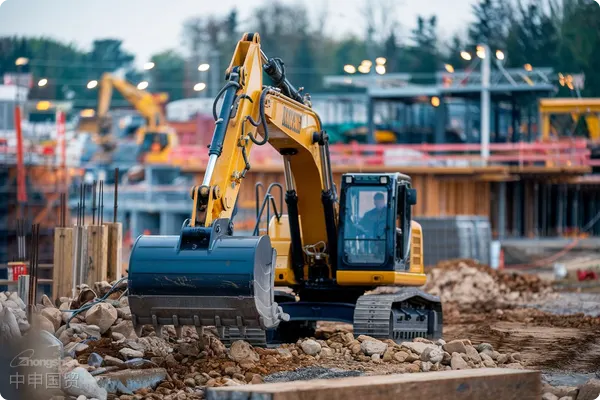
I. Main Factors Affecting Customs Clearance Time
Completeness of Documents and Certificates
- Commercial Invoice: Must accurately describe the goods value, quantity, specifications, etc. Customs require this information to assess the goods value and related taxes.
- Packing List: Clearly list the packaging method, dimensions, and weight of the goods. This helps customs understand the specifics of the goods and determine if additional inspections are needed.
- Bill of Lading: This serves as the transport contract and proof of receipt, confirming the goods have been loaded and shipped to the destination.
- It is recommended to verify through the following methods:Import License (if required): Certifies the goods origin, which may affect tariff treatment, especially under trade agreements between the EU and third countries.
- CE Certification and Declaration of Conformity: Construction machinery sold in the EU market must comply with relevant EU standards and directives, such asthe Machinery Directiveandthe EMC Directive, to ensure product safety and compliance.
Type and Condition of Goods
- Degree of Use: If it isUsed construction machinerymay require additional inspections and certifications, prolonging clearance time. Used equipment typically undergoes detailed quality checks to ensure compliance with German and EU safety and environmental standards. These inspections may include functional testing of mechanical components, verification of emission standards, and overall performance evaluation. To pass these stringent tests, exporters may need to submit the equipments usage history and maintenance records to confirm technical compliance with current regulations.
- Equipment Category: Certain specialized equipment may be classified as controlled items, requiring additional approvals. For example, high-risk equipment may be subject to special controls and require permits from relevant authorities. Such equipment may need thorough safety assessments and testing to ensure it poses no threat to operators or the environment during use. Special operation licenses may also be required, limiting operation to qualified personnel. Additionally, equipment involving radiation, pressure vessels, or high energy consumption may require further technical evaluations and compliance testing to meet safety and environmental regulations.
Payment of Tariffs and VAT
- Tariff: Based on the construction machinerysHS Code (Harmonized System Code), calculate applicable tariffs. Different types of equipment may have varying tariff rates. For instance, large construction machinery may face higher rates, while certain specialized equipment may qualify for tariff reductions. Tariff calculations may also consider the equipments purpose, country of origin, and bilateral trade agreements with Germany. Thus, consulting a tariff expert or customs broker before export is advisable to ensure accurate calculations and minimize unnecessary costs.
- Value - Added Tax (VAT): Germanys standard VAT rate is19%, though exemptions or reductions may apply in some cases. VAT is typically calculated based on the goods value plus the tariff amount. Special cases, such as equipment for research, education, or public welfare projects, may qualify for partial VAT relief. Additionally, if the exporter and importer have a special partnership or qualify under EU policies, further VAT benefits may apply. Therefore, thoroughly understanding relevant VAT policies is essential to optimize cost structures during trade.
Customs Inspection and Quarantine
- Random Customs Inspection: Goods may be randomly selected for inspection, extending clearance time. Inspections typically verify compliance with declared contents and ensure no illegal components are present.
- Safety and Environmental Inspection: Ensure the equipment complies with EUsafety and environmental standards, such as noise emissions and pollution control, etc.
Logistics and Port Efficiency
- Port congestion levels: Major ports like Hamburg, with their high cargo throughput, may experience extended customs clearance times during peak seasons.
- Logistics Arrangement: The **mode of transportation (Maritime Transportation,Air Transportation, land transport)** and the efficiency of the carrier can also directly impact clearance speed.
Using Professional Customs Brokers or Agents
- Experienced customs brokers: Can prepare all necessary documents in advance, are familiar with clearance procedures, and can expedite the process.
- Good communication with customs: Prompt responses to customs inquiries and requirements can effectively avoid delays and ensure faster cargo release.
Special Circumstances
- Holidays and weekends: German public holidays and weekends can affect customs processing times, leading to extended clearance periods.
- Policy changes: Changes in regulations or policies may require additional approvals or inspections, increasing the complexity of clearance.
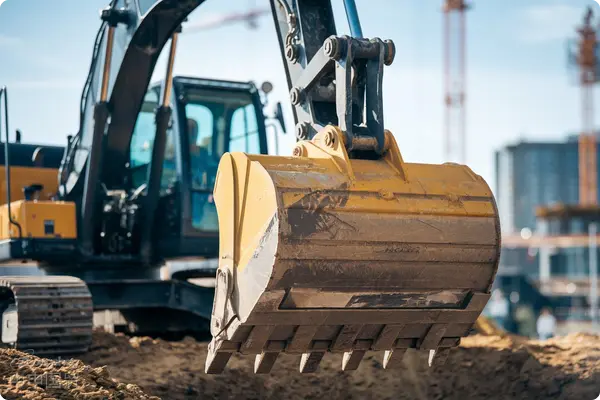
II. Recommended Measures
To minimize clearance time and avoid unnecessary delays, here are some recommended measures:
Prepare all necessary documents in advance
Ensure all documents are accurate and complete to avoid delays caused by documentation issues. These documents include commercial invoices, packing lists, bills of lading, certificates of origin, CE certifications, etc. Carefully verify the correctness of each document.
Confirm product compliance with EU standards
Ensure your construction machinery complies with relevant EU directives and standards, such as the Machinery Directive and Electromagnetic Compatibility Directive, and obtain necessary certifications and test reports. Completing these certifications in advance can significantly reduce potential review times during clearance.
Choose reliable logistics and customs service providers
Professional logistics providers and customs brokers can offer efficient clearance services, helping you avoid various issues due to lack of experience. They can typically resolve challenges encountered during clearance quickly, minimizing unnecessary complications.
Closely monitor cargo status
Track the progress of your cargos clearance through logistics providers or online systems. If any issues arise, you can respond promptly and communicate with customs to prevent prolonged cargo detention.
Allocate sufficient time
Factor in potential delays in your project schedule and allocate enough time. German customs procedures may be extended for various reasons, so including a time buffer in your planning is essential to avoid impacting subsequent project timelines.
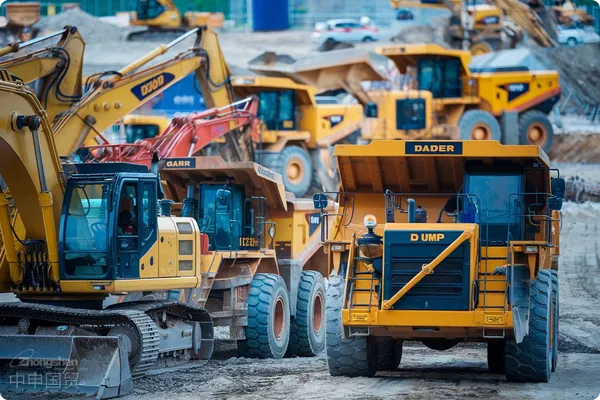
Kazakhstan is a member of the Eurasian Economic Union (EAEU), so it applies the unified customs tariff of the union. Steel structures and their semi - finished products usually fall under Chapter 73, especially HS code 7308. This chapter covers steel structures (such as bridges, towers, door frames, etc.) and semi - finished products related to steel structures.
Exporting construction machinery to Germany and smoothly clearing customs hinges on accurate document preparation, regulatory compliance, and efficient logistics arrangements. Many factors affect clearance time, including document completeness, cargo type, tax payments, customs inspections, and logistics efficiency. However, with thorough preparation, these challenges can be managed. Engaging professional customs brokers, maintaining good communication with customs, and selecting reliable logistics partners can significantly expedite clearance.
We hope this article provides practical information to help your construction machinery exports to Germany proceed smoothly, saving both time and costs!
Related Recommendations
Category case
Contact Us
Email: service@sh-zhongshen.com
Related Recommendations
Contact via WeChat

? 2025. All Rights Reserved. Shanghai ICP No. 2023007705-2  PSB Record: Shanghai No.31011502009912
PSB Record: Shanghai No.31011502009912

